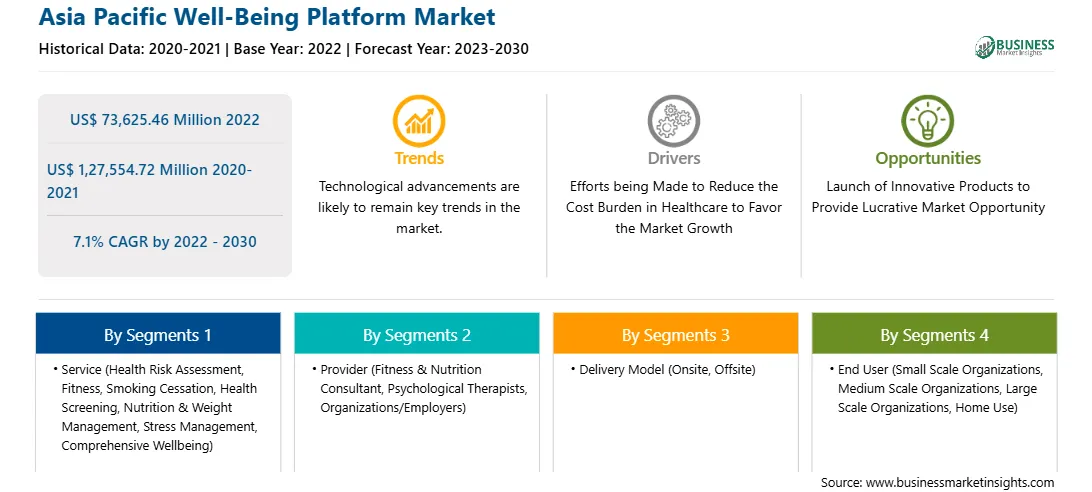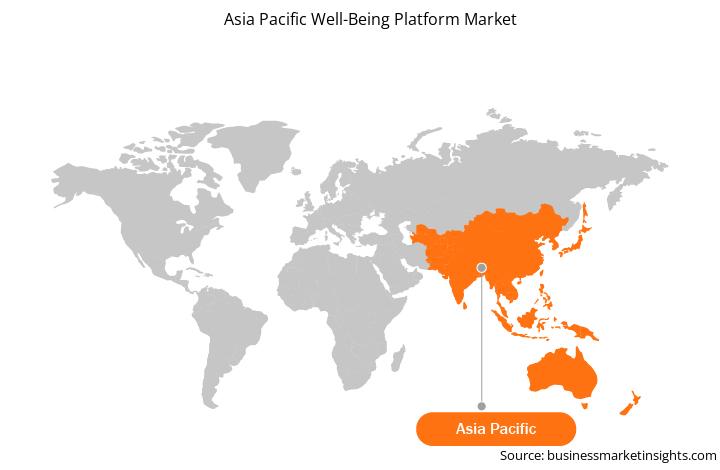According to a Centers for Disease Control and Prevention (CDC) report, investing in employees' health may lower the costs of healthcare and insurance claims. Employees suffering from obesity, smoking, and diabetes, pose a heavy burden on medical insurance companies to settle frequent and often high-cost healthcare-related claims. A healthy workplace program has the potential to keep both employees and employers in a low-risk category as it focuses on the overall health at workplaces and targets unhealthy employees, ultimately reducing overall health insurance costs. According to the RAND Corporation report, a lifestyle and disease management program helps employers reduce average healthcare costs by US$ 30 per member per month (PMPM). In addition, employees participating in the disease management program managed to save ~US$ 136 PMPM with a 30% reduction in hospital admissions. The RAND Wellness Program Study claims that lifestyle management can reduce health-associated risks such as smoking, obesity, and lack of physical activity. Thus, an effective workplace wellness program can lower an individual's hospital admission claims and encourage them to opt for clinical preventative services. Johnson & Johnson's Health and Wellness Program revealed that medical costs decreased annually by ~US$ 225 per participating employee through its policy, environmental, and educational components for addressing health risks, such as high blood pressure and cholesterol.
The Asia Pacific well-being platform market is segmented into China, Japan, India, Australia, South Korea, and the Rest of Asia Pacific. Asia Pacific is the fastest-growing market for wellbeing platforms. Organizations across Asia Pacific are experiencing losses in workplace productivity due to long working hours and work-related stress, causing a damaging effect on employees' overall health and well-being. Thus, employers are increasingly focusing on emotional and financial well-being. According to Global Wellbeing Survey 2022–2023 conducted by Aon, a global professional services firm, 85% of organizations in Asia Pacific now have a well-being strategy in place, and 77% have integrated it into their overall business and talent strategy. The same source further stated that 49% of organizations in the region reported increasing their investments in well-being initiatives compared to 43% globally. In 2022, Diageo's employee wellness program was recognized in FMCG Asia awards for the people-focused initiatives for its 500+ employees across Southeast Asia. The increasing popularity and awareness regarding the benefits of wellness platforms have prompted companies to invest in them, thereby positively fueling the Asia Pacific wellbeing platform market growth.
The Asia Pacific well-being platform market is segmented into service, provider, delivery model, end user, and country.
Based on service, the Asia Pacific well-being platform market is divided into health risk assessment, fitness, smoking cessation, health screening, nutrition & weight management, stress management, comprehensive wellbeing, and others. The comprehensive wellbeing segment held the largest market share in 2022.
By provider, the Asia Pacific well-being platform market is segmented into fitness & nutrition consultant, psychological therapists, and organizations/employers. The organizations/employers segment held the largest market share in 2022.
Based on delivery model, the Asia Pacific well-being platform market is bifurcated into Onsite and Offsite. The onsite segment held a larger market share in 2022.
Based on end user, the Asia Pacific well-being platform market is segmented into small scale organizations, medium scale organizations, large scale organizations, and home use. The home use segment held the largest market share in 2022.
Based on country, the Asia Pacific well-being platform market is segmented into China, Japan, India, Australia, South Korea, and the Rest of Asia Pacific. China dominated the Asia Pacific well-being platform market share in 2022.
Fitbit LLC, Limeade Inc, Optum Inc, and Virgin Pulse Inc are some of the leading companies operating in the Asia Pacific well-being platform market.
Strategic insights for the Asia Pacific Well-Being Platform provides data-driven analysis of the industry landscape, including current trends, key players, and regional nuances. These insights offer actionable recommendations, enabling readers to differentiate themselves from competitors by identifying untapped segments or developing unique value propositions. Leveraging data analytics, these insights help industry players anticipate the market shifts, whether investors, manufacturers, or other stakeholders. A future-oriented perspective is essential, helping stakeholders anticipate market shifts and position themselves for long-term success in this dynamic region. Ultimately, effective strategic insights empower readers to make informed decisions that drive profitability and achieve their business objectives within the market.

| Report Attribute | Details |
|---|---|
| Market size in 2022 | US$ 73,625.46 Million |
| Market Size by 2030 | US$ 1,27,554.72 Million |
| Global CAGR (2022 - 2030) | 7.1% |
| Historical Data | 2020-2021 |
| Forecast period | 2023-2030 |
| Segments Covered |
By Service
|
| Regions and Countries Covered | Asia-Pacific
|
| Market leaders and key company profiles |
The geographic scope of the Asia Pacific Well-Being Platform refers to the specific areas in which a business operates and competes. Understanding local distinctions, such as diverse consumer preferences (e.g., demand for specific plug types or battery backup durations), varying economic conditions, and regulatory environments, is crucial for tailoring strategies to specific markets. Businesses can expand their reach by identifying underserved areas or adapting their offerings to meet local demands. A clear market focus allows for more effective resource allocation, targeted marketing campaigns, and better positioning against local competitors, ultimately driving growth in those targeted areas.

The Asia Pacific Well-Being Platform Market is valued at US$ 73,625.46 Million in 2022, it is projected to reach US$ 1,27,554.72 Million by 2030.
As per our report Asia Pacific Well-Being Platform Market, the market size is valued at US$ 73,625.46 Million in 2022, projecting it to reach US$ 1,27,554.72 Million by 2030. This translates to a CAGR of approximately 7.1% during the forecast period.
The Asia Pacific Well-Being Platform Market report typically cover these key segments-
The historic period, base year, and forecast period can vary slightly depending on the specific market research report. However, for the Asia Pacific Well-Being Platform Market report:
The Asia Pacific Well-Being Platform Market is populated by several key players, each contributing to its growth and innovation. Some of the major players include:
The Asia Pacific Well-Being Platform Market report is valuable for diverse stakeholders, including:
Essentially, anyone involved in or considering involvement in the Asia Pacific Well-Being Platform Market value chain can benefit from the information contained in a comprehensive market report.